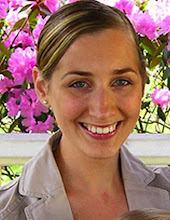In reading more over at Camp Creek, here are some points about project-based learning that resonated with me.
- project learning is to help a child connect with her work
- as a parent, your work is to learn about your child, how she learns, and how you can support her
- project learning is about how to learn and allowing the child to be in charge of his or her own learning
- project learning fosters independence
As I read through the resources offered at Camp Creek, this entry about white space really connected with my own thoughts. Below is the entire entry as it is something that I know I will need to refer back to every now and then.
When you look at a page, white space is the empty space that surrounds the text.
White space is very important. The amount of white space can make the text more legible. It can highlight a poem. It can set things off, emphasize them.
When there isn’t enough white space, the text can be hard to read, hard to understand. The page is cluttered; the brain has a hard time sorting out what’s there.
When we talk about overscheduled kids, I think about white space.
When we talk about project learning, I think about white space.
When we cram too many experiences into a child’s day/week/life, we don’t leave time for them to think about what they’ve experienced — they just move on to the next thing, letting the previous thing drop away.
(This is true for ourselves, too, of course.)
When children are learning through projects, their interest and engagement and production of work will naturally ebb and flow. It’s not factory work — it doesn’t happen at a single, steady pace. It’s creative work — it requires thinking, and having ideas, and mulling things over, and a change of pace now and then.
What is white space in a project? Doing something else for awhile … turning your attention to a different problem … relaxing … reading … being bored … maybe simply slowing the pace for awhile.
Refilling the well, being inspired, making connections, reflecting … these aren’t things that are easily acknowledged and checked off a list. They need time — empty, unfilled, unscheduled time. White space.
Without the white space, there’s no balance.
Rather than thinking about quantity — of ideas, of experiences, of work produced — we need to think about quality. Spending more time doing less, so we can do better and appreciate more. A single experience, really and truly had and understood, is more valuable than weeks and weeks of rushed, unconnected, random experiences.








No comments:
Post a Comment